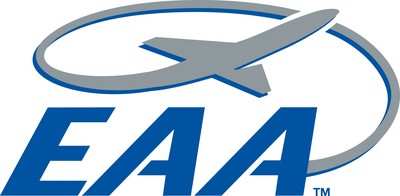Tue, Dec 27, 2016
EAA Comments On NavWorx Airworthiness Directive
FAA Airworthiness directives (AD) are issued when the FAA finds a condition that renders a type-certificated airplane un-airworthy. Sometimes ADs require immediate action, and at other times they may take place over a prescribed time span or require periodic inspections. However, the position has been taken for some time that they commonly do not apply to aircraft certified as experimental.

EAA has recently taken action regarding an AD that was applied to a non-certificated appliance. Here’s what EAA has to say:
EAA submitted comments on a proposed AD concerning NavWorx ADS-B systems that would set a troubling precedent involving FAA oversight of “non-certified” parts commonly used in experimental aircraft. The AD covers the company’s model ADS600-B units (part numbers 200-0012 and 200-0013) and model ADS600-EXP units. EAA objected to the inclusion of the latter model in the AD, as it is produced solely for the experimental and light-sport markets.
Thanks to previous advocacy work conducted by EAA, in 2012 the FAA clarified that airworthiness directives do not apply to experimental aircraft unless specifically noted in the AD’s applicability statement. In this case, experimental aircraft owners must in some way address any airworthiness concerns on the parts used in their aircraft that are outlined in the AD. But ADs are only used to address airworthiness concerns in items, such as an engine or propeller that is intended for use in type-certificated aircraft. ADs are never used against “non-certified” parts, which is why the proposed AD would set a troubling precedent.
The FAA only requires experimental aircraft owners to meet the performance standards of FARs 91.225 and 91.227 in order to satisfy the ADS-B out mandate. Therefore, the aircraft owner is the final authority in ensuring compliance.
“If a potential unsafe condition exists in any product installed on an aircraft operating in the NAS, EAA does not object to manufacturers and operators being alerted through appropriate means. But an airworthiness directive is not appropriate to address such an issue regarding a part that was never intended for installation in a type-certificated aircraft,” EAA Vice President of Advocacy and Safety Sean Elliott wrote in the comments. EAA requested that the FAA withdraw the AD for the ADS600-EXP and instead communicate safety concerns through non-regulatory special airworthiness information bulletins (SAIBs) or safety alerts for operators (SAFOs).
More News
“We respectfully call on the City of Mesa to: 1. Withdraw the landing fee proposal immediately 2. Engage with the aviation community before making decisions that impact safet>[...]
High Speed Taxiway A long radius taxiway designed and provided with lighting or marking to define the path of aircraft, traveling at high speed (up to 60 knots), from the runway ce>[...]
Aero Linx: International Federation of Airworthiness (IFA) IFA uniquely combines together all those with responsibility for policies, principles and practices concerned with the co>[...]
Controller’s Expectation That VW02 Would Have Departed Sooner Led To An Inadequate Scan And Loss Of Situational Awareness Analysis: A Robinson R-44 helicopter N744AF, VW02 (V>[...]
A Few Questions AND Answers To Help You Get MORE Out of ANN! 1) I forgot my password. How do I find it? 1) Easy... click here and give us your e-mail address--we'll send it to you >[...]
 Aero-News: Quote of the Day (12.09.25)
Aero-News: Quote of the Day (12.09.25) ANN's Daily Aero-Term (12.09.25): High Speed Taxiway
ANN's Daily Aero-Term (12.09.25): High Speed Taxiway ANN's Daily Aero-Linx (12.09.25)
ANN's Daily Aero-Linx (12.09.25) NTSB Final Report: Diamond Aircraft Ind Inc DA20C1 (A1); Robinson Helicopter R44
NTSB Final Report: Diamond Aircraft Ind Inc DA20C1 (A1); Robinson Helicopter R44 ANN FAQ: Q&A 101
ANN FAQ: Q&A 101



